Stories
Saying goodbye to our longtime headquarters: A photo blog through the eyes of Jean-Baptiste Petitpas, our office manager and unofficial historian.
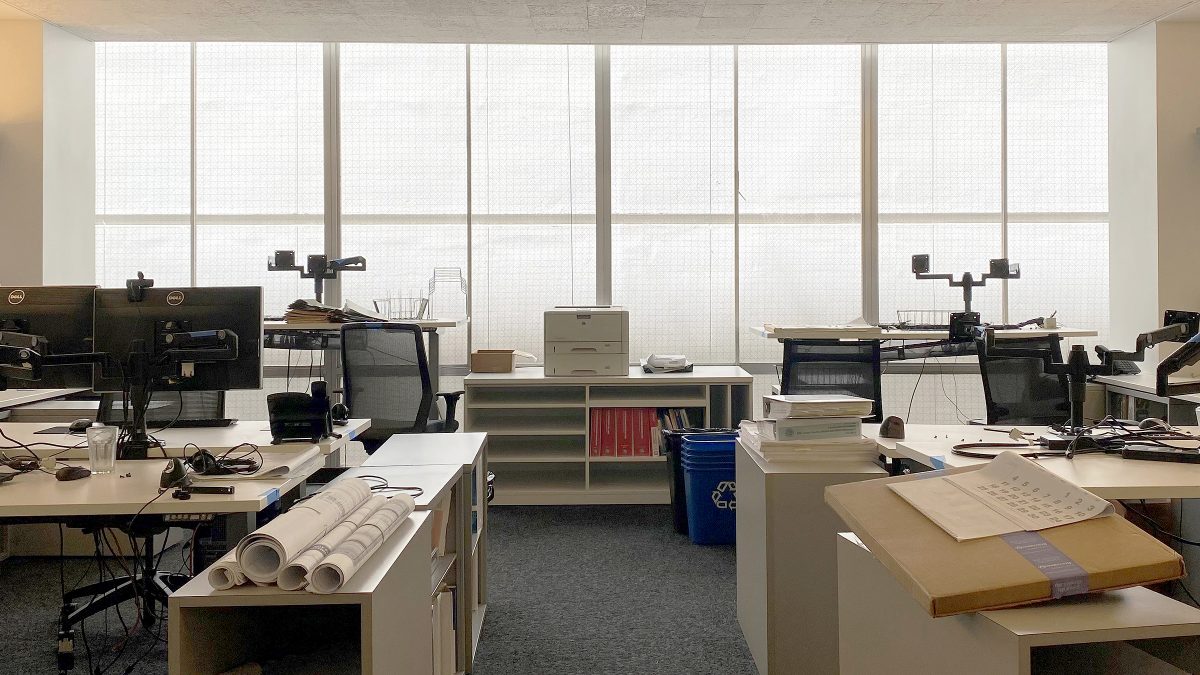
Prepping for the big move. Layers of work to sift through.
When I joined RMW nearly thirty years ago, the office at 160 Pine Street was filled with cubicles. These were constructed of wood with chest-high partitions so that colleagues could not see one another without standing up. They were semi-private and spacious, allowing for impromptu project team meetings, almost like mini huddle spaces. Our conference rooms were formal and reserved for meetings between clients and project teams. In 1994, staff used drafting tables and designs were drawn primarily by hand. People always seemed to have time for one another because they were not constantly being interrupted by incoming emails and meeting alerts.
Around 2010, the density at 160 Pine reached its peak when we consolidated to one floor and reduced the footprint of each workstation. Staff was in closer proximity to one another, and the office buzzed with new energy. The closer quarters crystallized the existing personalities of each team or pod. Those who enjoyed great chemistry grew even closer, while other pods continued to work quietly as before because that’s what worked best for them. People will always find what works for them. The break room was combined with the mail room, and there was not a designated place to sit with colleagues to enjoy a coffee break. The office seemed to be in need of two things: more huddle space and more natural light.
After nearly 30 years of working alongside colleagues at 160 Pine, it feels appropriate to be moving on. The two years of work from home made the move feel so gradual and eventual that it erased any sadness that I expected to have about leaving. There is nostalgia associated with 160 Pine of course, but there are new memories to be made at the Russ Building, where our new headquarters will be.

It begins. The first piece of furniture being moved from our long time headquarters to our new office space.

After over thirty years in the same place, there are many decisions to be made about what to keep and what to shred.
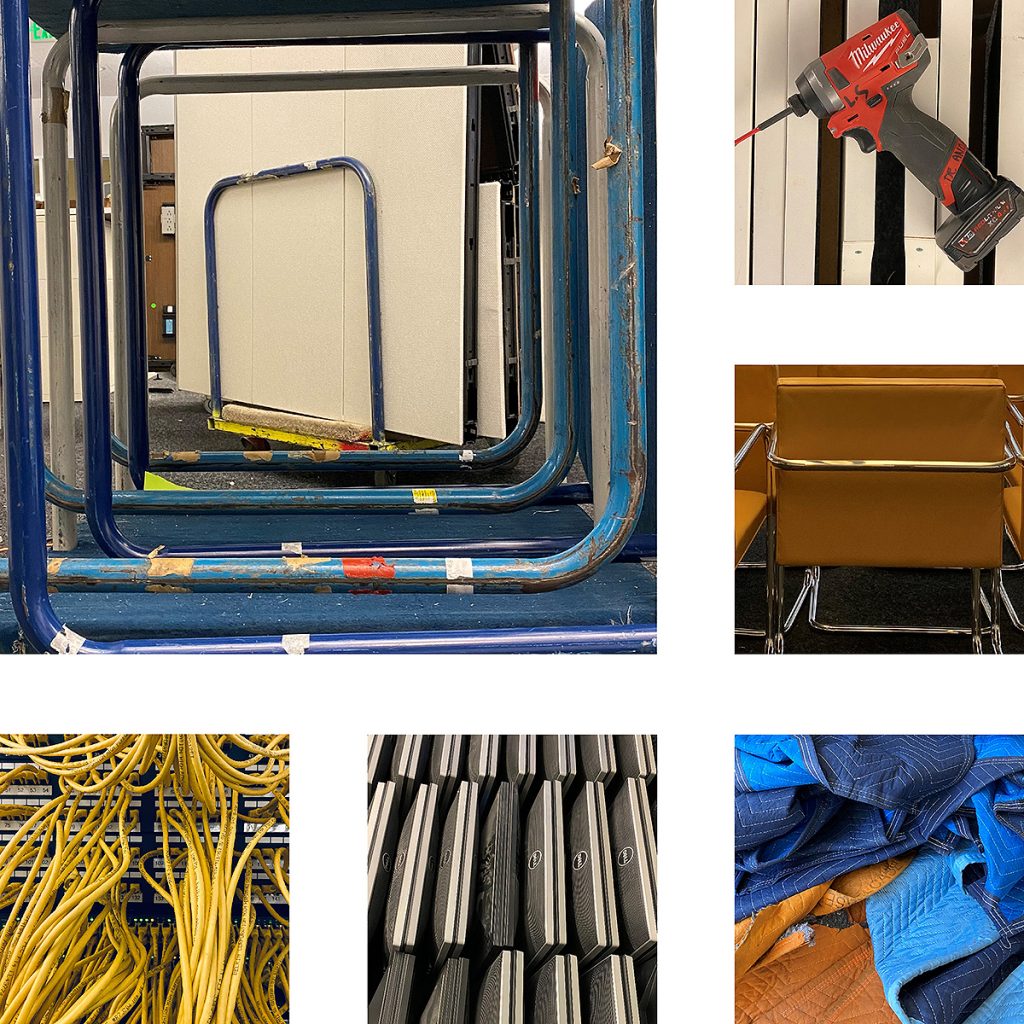
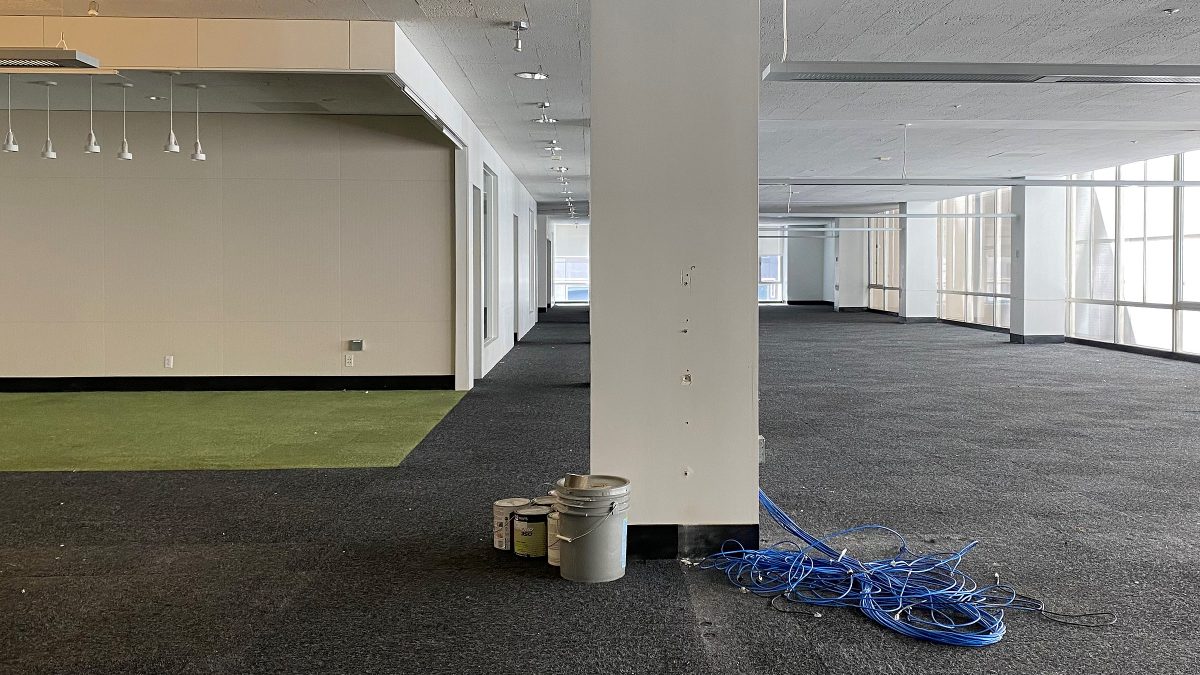
Final farewell. A last look at 160 Pine.
Impressions of the new space
The Russ Building is an iconic and historic building a few blocks west from 160 Pine. It is a building I’ve always admired. When visiting our new workspace for the first time, the biggest surprise for me was realizing how spacious it felt, even though we were downsizing our footprint by 1/3 the square footage of our previous office. Knowing how dense and cluttered our offices were at 160 Pine, I was anxious about us having to move to an even a smaller office space.
Passing through our office front door, I was immediately struck by the amount of natural light within, but also by the raw concrete floor; the tall, open ceilings with exposed mechanical system and wires; the original concrete columns and plumbing pipes being displayed in their original state throughout the space. A nice surprise was discovering that the original cable conduits under the flooring had been revealed during construction. These metal conduits create a network of interconnecting lines on the floor not unlike copper lines found in a computer board which allows electrical charge to flow through the printed circuit board (PCB).
All these features speak to my design aesthetic of a well-lived-in space with plenty of character and patina inherited from decades of occupancy by all the previous tenants before us. Being a city person at heart, I thrive in an urban setting and look forward to the jolt of energy I get from walking through the Financial District to reach the office. I’ve always had a desire to live in a loft-like space. Now I get to work in one such environment.
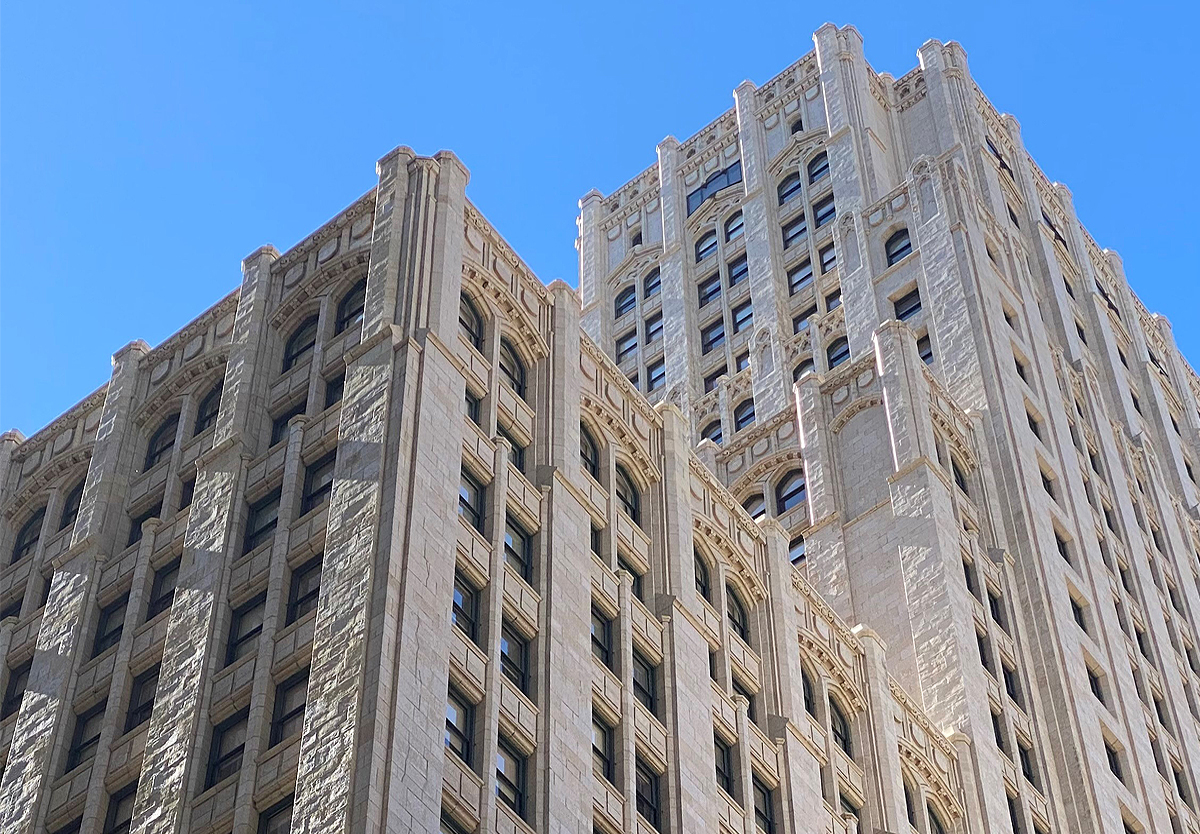
Our new home, the neo-gothic Russ Building occupies a full block at Montgomery street.
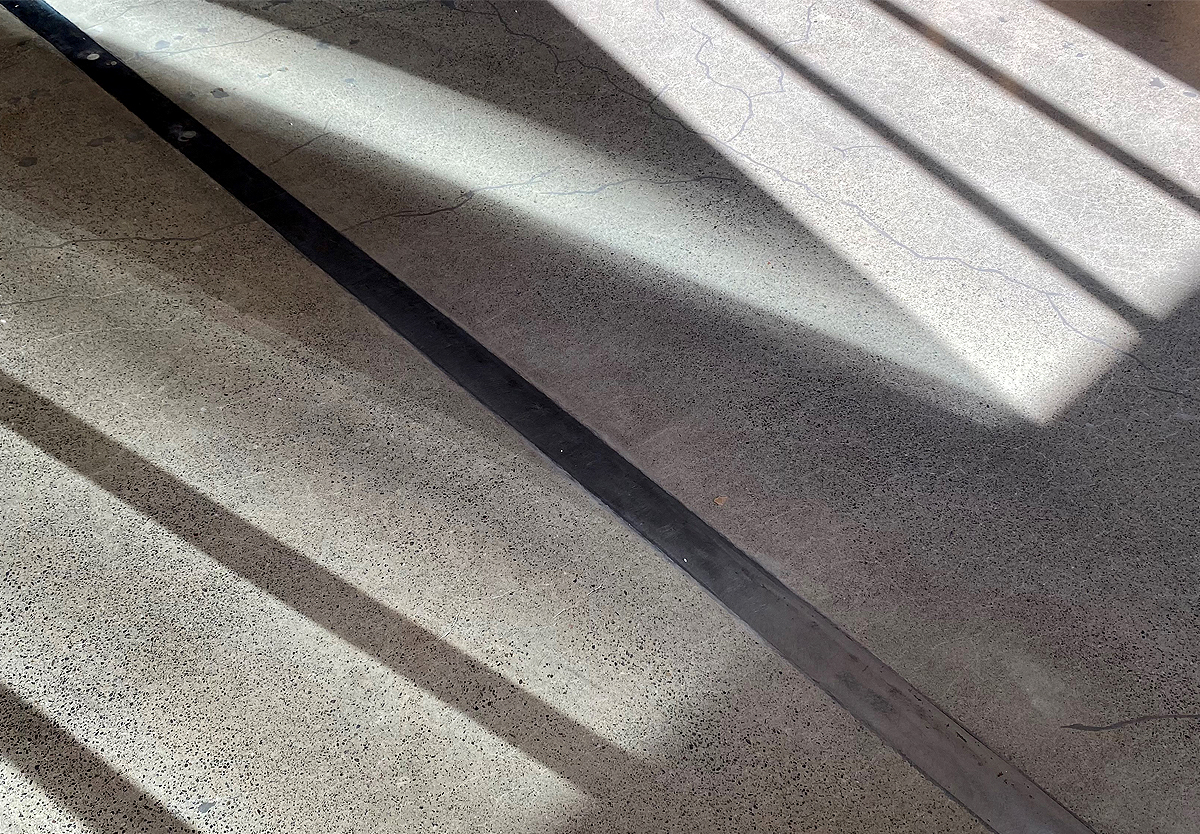
Original cable conduits, once hidden, are now polished for all to see.

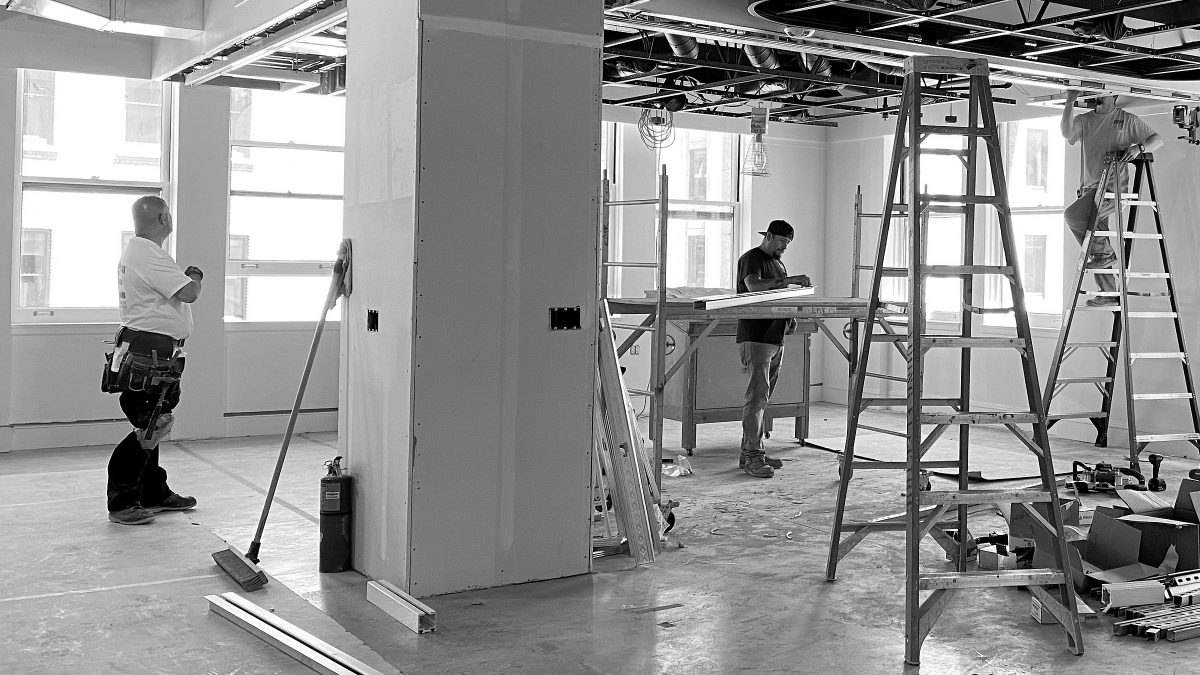
The many windows in the new space help to illuminate the progress as our new home comes to life.

Employees will be positioned near operable windows, giving them access to fresh air.

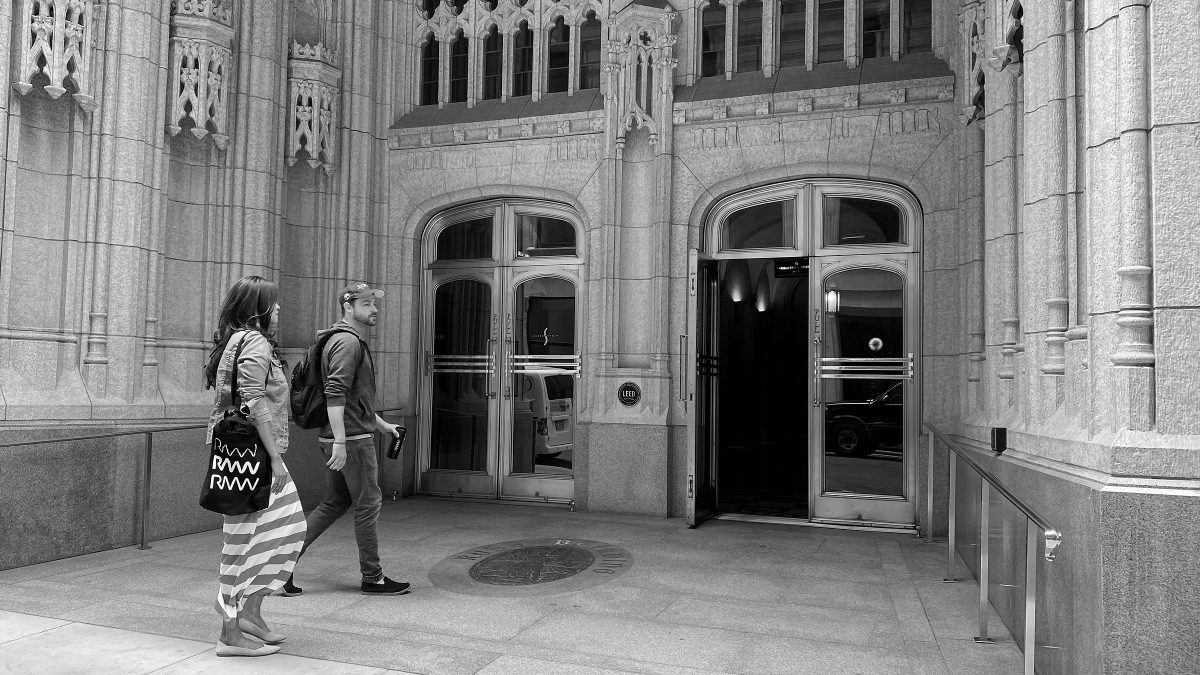
The building entry with its ornate stonework is emblematic of the neo-gothic style of this historic landmark, however, an internal modernization with sustainability-focused renovations have garnered it a LEED Platinum certification.
Contributors